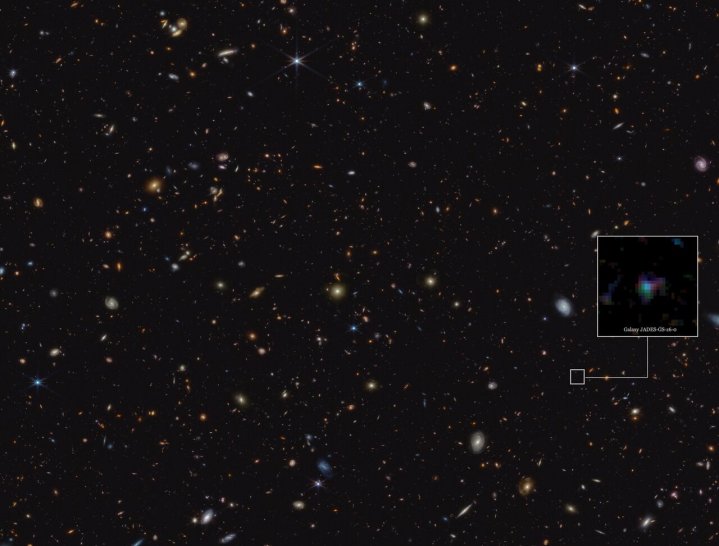[ad_1]
Dust might not sound like the most interesting of topics, but to a certain set of astronomers, it’s thrilling. Researchers recently used the James Webb Space Telescope to identify grains of dust from the early universe, which could have been produced by the earliest supernovas.
James Webb is a powerful tool because it allows researchers to identify extremely distant, and therefore extremely old, galaxies. Webb can be used to not only identify these early galaxies but also to take spectra from them, which can reveal their chemical composition by seeing which wavelengths of light they absorb. As part of a survey called JWST Advanced Deep Extragalactic Survey or JADES, Webb’s NIRCam instrument took this image of a region of the sky called GOODS-South. Within that image, researchers used Webb’s NIRSpec instrument to look at the spectra of early galaxies like JADES-GS-z6.

Using the spectrograph, the researchers found evidence of carbon-rich grains in dust clouds. That appears to be similar to findings of compounds called polycyclic aromatic hydrocarbons (PAHs), however, it wouldn’t have been possible for these complex compounds to have formed so early in the universe.
This is complicated because spectra can look similar for different chemicals. In this case, it could be that the tiny variance found by the researchers is significant: their feature was most prominent at 226.3 nanometers, while PAHs are typically most prominent at 217.5 nanometers. That’s a very small discrepancy, but it could be due to a mixture of particles present in the dust.
“This slight shift in wavelength of where the absorption is strongest suggests we may be seeing a different mix of grains, for example, graphite- or diamond-like grains,” said lead author of the research, Joris Witstok of the University of Cambridge, in a statement. Witstok went on to explain that this mixture could have come about due to early supernovas or large stars called Wolf-Rayet stars: “This could also potentially be produced on short timescales by Wolf-Rayet stars or supernova ejecta.”
Since work with Webb began last year, astronomers have noted that early galaxies seem to be considerably more numerous and more massive than anyone had predicted, which, along with evidence such as this discovery, is leading them to rethink their assumptions about the early universe.
“This discovery implies that infant galaxies in the early Universe develop much faster than we ever anticipated,” said researcher Renske Smit of Liverpool John Moores University. “Webb shows us a complexity of the earliest birthplaces of stars (and planets) that models are yet to explain.“
The research is published in the journal Nature.
Editors’ Recommendations
[ad_2]









